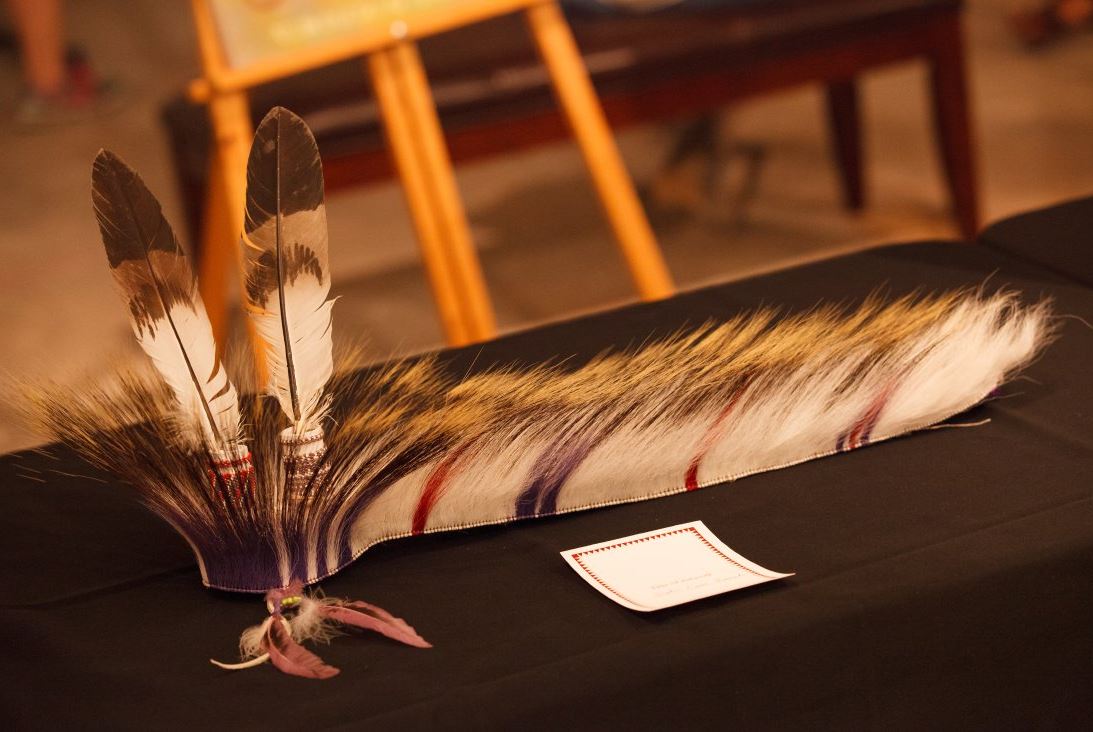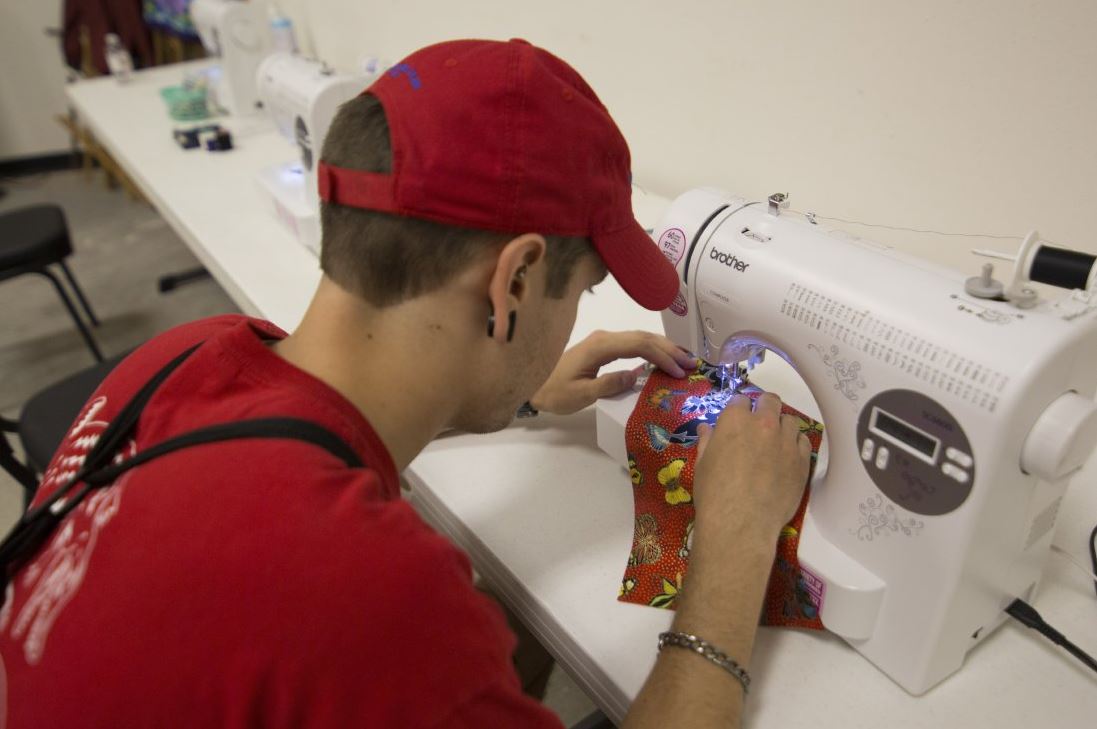Though Family Festival and powwow season are a few months away, the winter months provide ample time to prepare regalia and other traditional dress. Often times, the prices and intricacy involved in Native American regalia can be intimidating for those who only observed from afar. But as CPN Cultural Coordinator Coby Lehman and Dr. Kelli Mosteller of the CPN Cultural Heritage explain in this Q&A, most clothing and accessories worn around the dance arena are accessible with some time and effort. What is regalia and what is its significance?
What is regalia and what is its significance?
Dr. Mosteller: “Regalia is the clothing or adornments that Native people wear during powwows or social dances. It is important because it is a tangible connection to our past. People should, and usually do, make most of their regalia themselves. If they don’t personally do all of the sewing they should at least have a lot of input in design and construction process. Regalia often includes pieces that have been gifted to the dancer, or handed down through their family. Newly created pieces can incorporate patterns or designs shared by others in their family or clan.”
Lehman: “As Indian people, we say ‘our’ regalia because everything we wear is handmade. Many hours have been spent making our regalia and in essence, it is a part of us.”
“Regalia is important to Indian people because dancers are expected by tradition to look their best. Some emcees will even announce that dancers should be in their ‘Sunday Best’ when they enter the arena. There is also a tradition that says warriors would put on their best regalia before they went into battle, so if they were killed they would be in the best attire for the journey to heaven. Because some powwow dances recreate the action seen in battle, dancers continue the tradition of wearing regalia that demonstrates their best creative efforts.”
Does it have to be expensive? For instance, does it have to be made by a company like Pendleton?
Lehman: “No, it doesn’t have to be expensive, and certainly not anything brand name. However, regalia should never be assembled from completely mass produced or foreign made pieces. Vendors such as Crazy Crow Trading Post or Noc Bay offer raw materials and kits that will allow the maker to keep costs reasonable while still getting a quality product.”
Dr. Mosteller: “Regalia does not have to be expensive, but putting together a full set with a number of pieces can be a large expense. It is better to make your regalia yourself or purchase a kit that you can construct and add personal touches to instead of buying ready-made pieces.”
Lehman: “For competition, there is an expectation that dancers will invest a significant amount of money and effort into their regalia, but for family events and social dances a ribbon shirt and slacks or jeans for men and skirts and shawls for women are considered traditional Potawatomi dress.”
What are some simple pieces or accessories for regalia a person can make using supplies found in their immediate area?
Lehman: “Chokers, necklaces and bandoliers can all be made from materials available at stores like Hobby Lobby, along with the traditional ribbon shirts, skirts and shawls. However, anyone just starting out will spend less money and be less frustrated if they purchase a complete kit with directions from one of the vendors like Crazy Cow Trading Post or Noc Bay.”
Dr. Mosteller: “There are dozens of instructional videos online and like Coby said, retailers like Crazy Crow and Noc Bay sell kits with printed instructions. It is probably easiest to buy general supplies at a local craft store and specialty supplies, like beads and some of the detailed pieces online. There are ready made kits for things like chokers, breastplates, bandoliers and other items.” What are some resources for learning more about how to design Potawatomi regalia?
What are some resources for learning more about how to design Potawatomi regalia?
Lehman: “Crazy Crow sells books on regalia-making for specific competition dances, as well as general books on beadwork, jewelry making, and moccasin making. As far as designs go, be original with your own design. It can include imagery from Woodlands culture such as floral or leaf patterns, but this should not be seen as a requirement.”
“However, make sure you understand the meaning behind a design before you implement it in your regalia. Do the proper research before you begin and never copy regalia symbols from another dancer – you don’t know what they may represent for them, their family or their tribe.”
